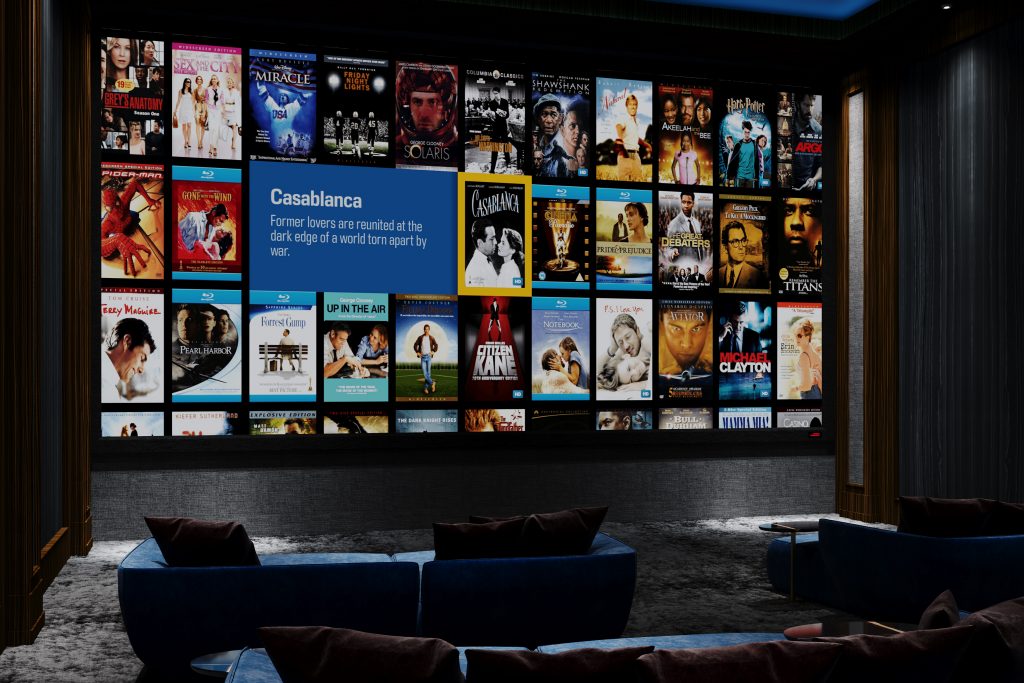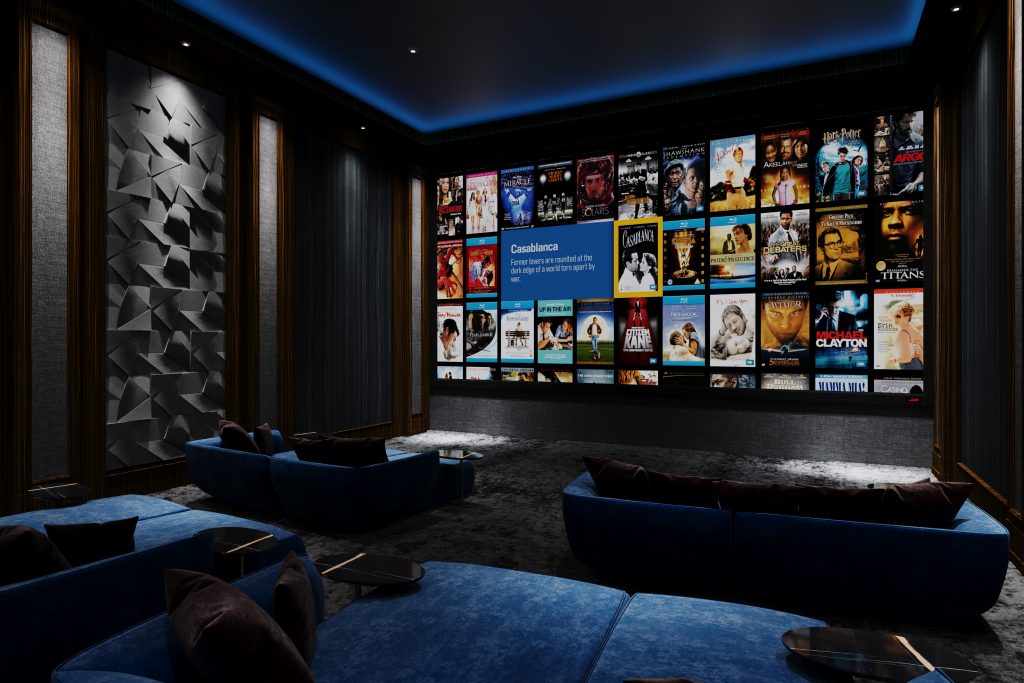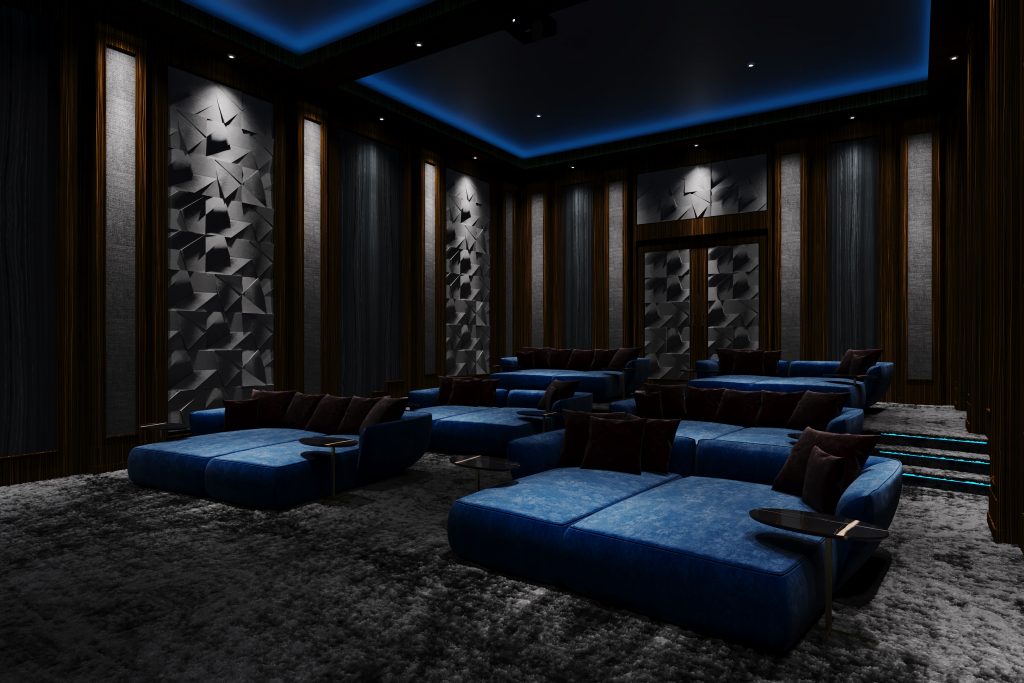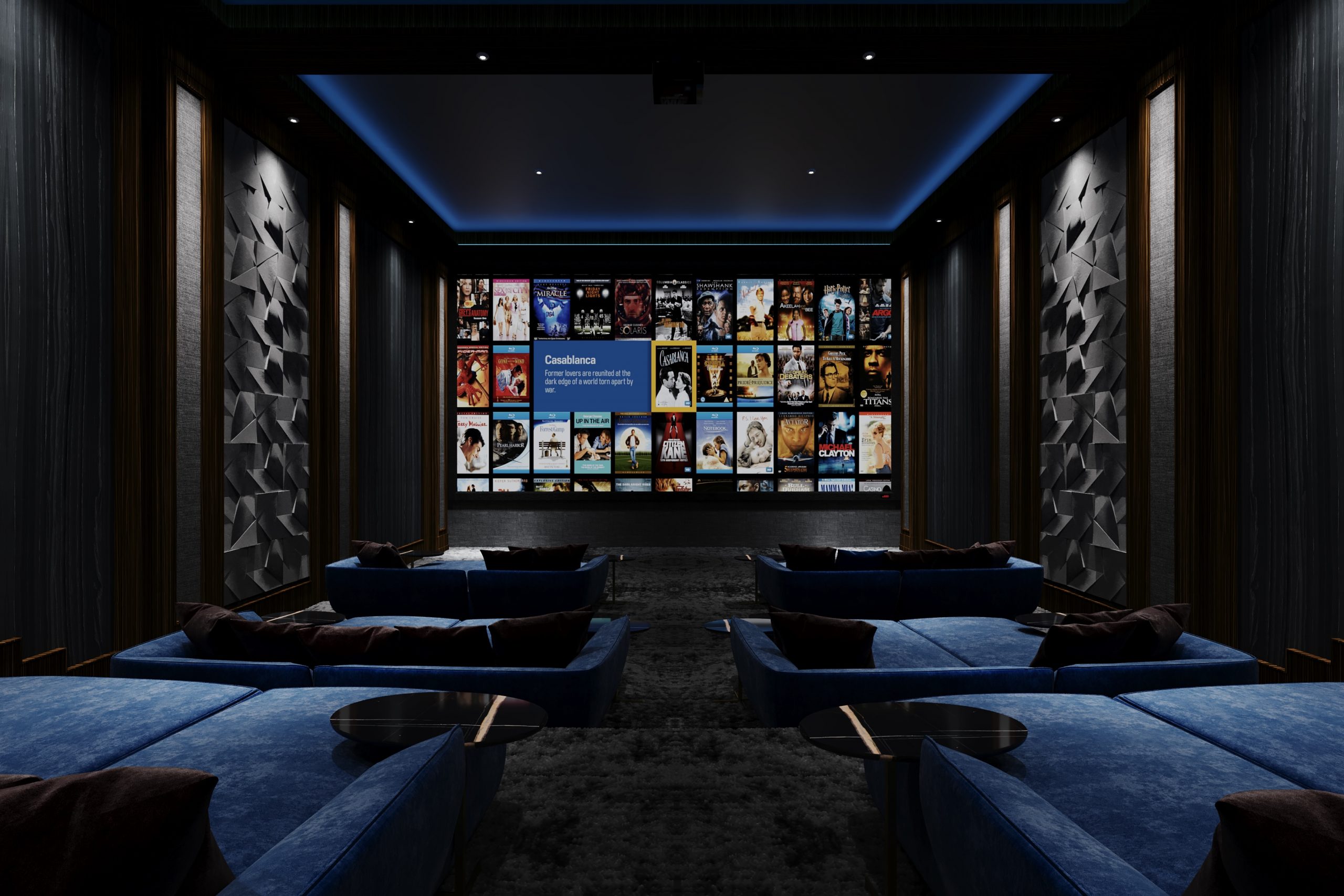In this article, Guy looks at the performance objectives that are used in the design of a home cinema system.
Contents:
- Traditional design criteria
- Variances in the delivery of the home cinema system
- Cinema Grades in home cinema system design
- The Imagine This approach to the home cinema system
Traditional Design Criteria
Years ago, the criteria for providing a home cinema were all concerned with creating a certain aesthetic and meeting a defined budget. The technical performance of the home cinema was rarely discussed accurately, and ethereal terms, such as “high-performance” were used. But, for the customer, what would that mean?
Firstly, let’s just think about what we mean by a home cinema system. Early in my career, that meant a traditional cinema room (think about those big American rooms). They had a very distinctive look and feel. I remember very early on looking at those rooms and wishing that UK homes had the space to jemmy in a large CRT projector and some big seats. It was harder the emulate those characteristic rooms in terms of aesthetics and performance.
That’s no longer the case. Things have thankfully moved on. That large, dedicated space that people used to think was required is no longer necessarily needed. Indeed, multi-functional spaces have become more the norm than not. Some dedicated home cinema rooms have even become smaller and more intimate.
We used to categorise home cinemas as either dedicated cinemas or media rooms. When I was involved with judging the CEDIA US and Asia Pacific awards, and the CEDIA global awards, this was how rooms were pigeonholed. Now, however, rooms are categorised using “performance objectives”. Not by cost, or look and feel, but by how that room performs. Budget will be an important factor in that, but it won’t be everything.

Variances in The Delivery of the Home Cinema System
If I were to ask ten people to build me a cinema room or multi-functional audio-visual space, the likelihood is that I would end up with ten different results. But what If I asked for the delivery of certain performance objectives?
For example, the audio should play at 98db, and the front projection screen should have a luminance of 63ftL. Equally, in defining an aspect ratio of 1.78:1 and loudspeakers in a 7.1(4).4 configuration; I’d probably get a far more consistent result. Additionally, the cost estimates would be far closer to an “apples-to-apples” comparison.
That is the way people should refer to a design. A system with higher performance will undoubtedly require a greater level of engineering excellence. And probably (although not exclusively) a greater budget.
Cinema Grades in Home Cinema System Design
Latterly, the industry now refers to these design criteria as “cinema grades”. This will allow cinema designers to provide the client with an accurate specification and a metrics-based evaluation of their potential home cinema system.
It will be split into four levels. One being the least demanding on the components and four being the highest of performance demands on the components and system. Let’s look at some of the areas that may seem the most obvious.
The Sound Pressure Level (SPL) of the loudspeakers at the listening position will depend on a few main factors. How far away do you sit? How efficient are the speakers? What type of loudspeaker technology? How much amplification power do you have at your disposal? These metrics will help (not exclusively) to determine the overall SPL at the listening position.
SPL is important but again not everything. If the noise floor is too high and the measured SPL at the listening position is too low, the dynamic range will be compressed.
If you can’t control both the natural and ambient light in the room, then the contrast ratio and measured brightness (luminance) will also suffer.
So, it is evident that grading the room on “performance objectives” will be both definable and quantifiable. This way of grading a home cinema should allow the consumer to choose a system based on metrics. Consequently, they will be able to determine a ‘predictable’ outcome.
The awards used to be judged on price; and although the price will undoubtedly allow for higher-performing and better-quality products, it doesn’t necessarily mean you will obtain a good system. By defining the performance objectives, better comparisons may be made.

The Imagine This Approach to the Home Cinema System
At Imagine This we have already been working this way for years. Never looking at individual products, but more at how those products will perform in the space and as part of a larger system. Designing a system needs a true in-depth understanding of all the technical elements. Making sure that they are compatible, as the sum of the whole will be greater than the sum of the parts.
The industry is becoming saturated with companies all claiming to be experts. At Imagine This we know that competency is both underpinning knowledge and experience. We have a multi-award-winning portfolio to support this. After 25 years and some wonderful projects under our belt, you can be sure that what we deliver will be nothing short of breath-taking. And the metrics will support that!

Further Reading
For a further home-cinema-related technical article, please see Guy’s post LFE and Home Cinema Bass Explained. Here is an article with considerations to make when selecting your home cinema installer. For something different, how about our article on upgrading to Lutron Homeworks QS?
(Additionally, if there is a topic you would like us to address in our news articles, please let us know using the contact form below.)

